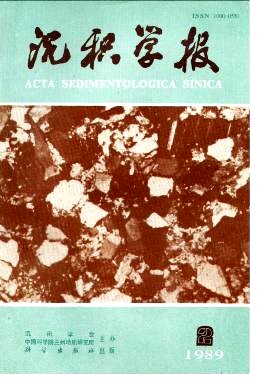DEEP WATER CARBONATE SEDIMENTATION OF THE SOUTH CHINA SEA
- Received Date: 1987-03-02
- Publish Date: 1989-06-10
Abstract: The bauxite-bearing rock cerise in the western Henan exists in Middle or Upper Carboniferous, and covers discordant upon the carbonate rock of Middle Ordovician or Upper Cambrian.This paper deals with the vertical ,lateral changes and their distribution of facies, mineral associations, chemical composition,texture and structure, trace metals, size fraction and the determination of gravel orientation of the ore-bearing rock se- ries. Vertically, the ore-bearing series makes up a circle of transgression to regression which is composed of the secondary circle in the initial stage of transgression of the Carboniferous.It is shown that the ferrous clay rocks below is fresh water or brackish water deposit, formed in the backshore mud(lat area in the early peroid of the transgression; the bauxite deposits belongs to the normal sea water or freshening seawater deposit, and formed in the foreshore and nearshore district in the largest period of transgression, but meanwhile there forms clay deposits in the north of western Henan; the clay shale above dcposiged in the freshening seawatcr circum- stance in the backshore mudflat district in the period of regression; sequcntly. somewhere developed swamps and formed battie with coal line/coal bed; afterward the seawater withdrawn from the region temporarily. Laterally, in the sedimentary period of bauxite deposits, the relief feature in this area was lower in northeast and higher is southwest, the sedimentary basin behaved trianglarly and opened towards east, there developed a series of ancient islamds, which in some degree segrated the sedimentary environment.One tributa ry of the seawater flow. being larger than that one, flowed northeasterward from Hebi and Anyang district, then turning to west; the other one came from Yongcheng in the eastern area.The sedimentary environment controlled the distribution of the ore deposit and rocks.There mainly developed two layers of carbonate rocks in Hebi and Anyang district. which formed in the shelf sea; in the northern area--Jiaozuo-Kaifeng there is the nearshore and offshore environment, in which formed clay rocks and fine fragmental clay deposits; in the southern area there is the shore circumstance, in foreshore and nearshore deposited bauxite. Because of the segretion of relief feature, the southern shore environment could be subdvided into live subfacics, which are Yanshi-Xinyang -Gong County open shore subfacies, Songshan-Qishan lagoon and bay sudfacies between is- lands, Sanmenzia-Shan County-Mianchi bay subfacies, Xinan semi-closed lagoon subfacies, and Ruyong Lushan-Baofeng lagoon subfacies. The richer bauxite deposits lie mainly in the semi-closed lagoon and bay subfacies, where exist a stronger karstification. In some areas the bauxite deposit is characterised by grading bedding, massive bedding, parallel cross bedding and basement-sustaining texture, which indicates that the bauxite belongs to dense-flow sediments. And through the bauxite appeared in the shore circumstance, possessing fragment-pisolite-oolite hybrid fez- ture, pseudo-thin wrapper pisolite-oolite texture. rolling bedding, lenticular bedding and depending on grading analysis, we have a conclusion that some bauxite may be a sort of nearshore storm sediment. The bauxite formed upon the weathering crust which had as long as 150 million years time developping.It had simple mineral association(diaspore, kaolinite, illinite, etc.)and chem ical composition. The ore- forming material was transported in fine fragment and colloidal state, and then deposited in the sedimentary basin and again fransported mechanically Based on size fraction, it is indicated that most bauxite deposited in a torrential dynamical condition. All these processes happened in the steady tectonic background--platform stage. The bauxite formed in a specific mud coast, and had little land-derived frag- ment (quartz, feldspar, mica) contaminating.From Jurassic, because the district entered a new tectonic stage-一diwa (geodepression) stage, the ore-bearing rock series was raised up near land surface, and suf- fered from transforming and leaching of underground water, which resulted in silicon and iron in orebodies removed and bauxite becomed richer.The sedimentary environment as a base of ore-forming controlled mineral associations.The mineral associations (e.g. diaspore-kaolinite combination) formed in favorable surrounding (e.g. semi-closed bay or lagoon facies) liable to be leached and richened. So we have a conclusion that the rich- er bauxite is closely related to the favorable sedimentary environment. Finally, this paper points out that depending on sedimentary facies, bauxite can be found out in the shore fades, and richer bauxite in the semi-closed lagoon and bay subfacies. The ore all distributes in the edge of ancient land or island. Another factor controlling metalogenesis and richening is the karstilication, which has been discussed in other paper. This paper also points out the areas proably beaing orebodies.
| Citation: | Shi Hesheng, Wang Guanlong, Guan Yiwen. DEEP WATER CARBONATE SEDIMENTATION OF THE SOUTH CHINA SEA[J]. Acta Sedimentologica Sinica, 1989, 7(2): 89-98. |






 DownLoad:
DownLoad: